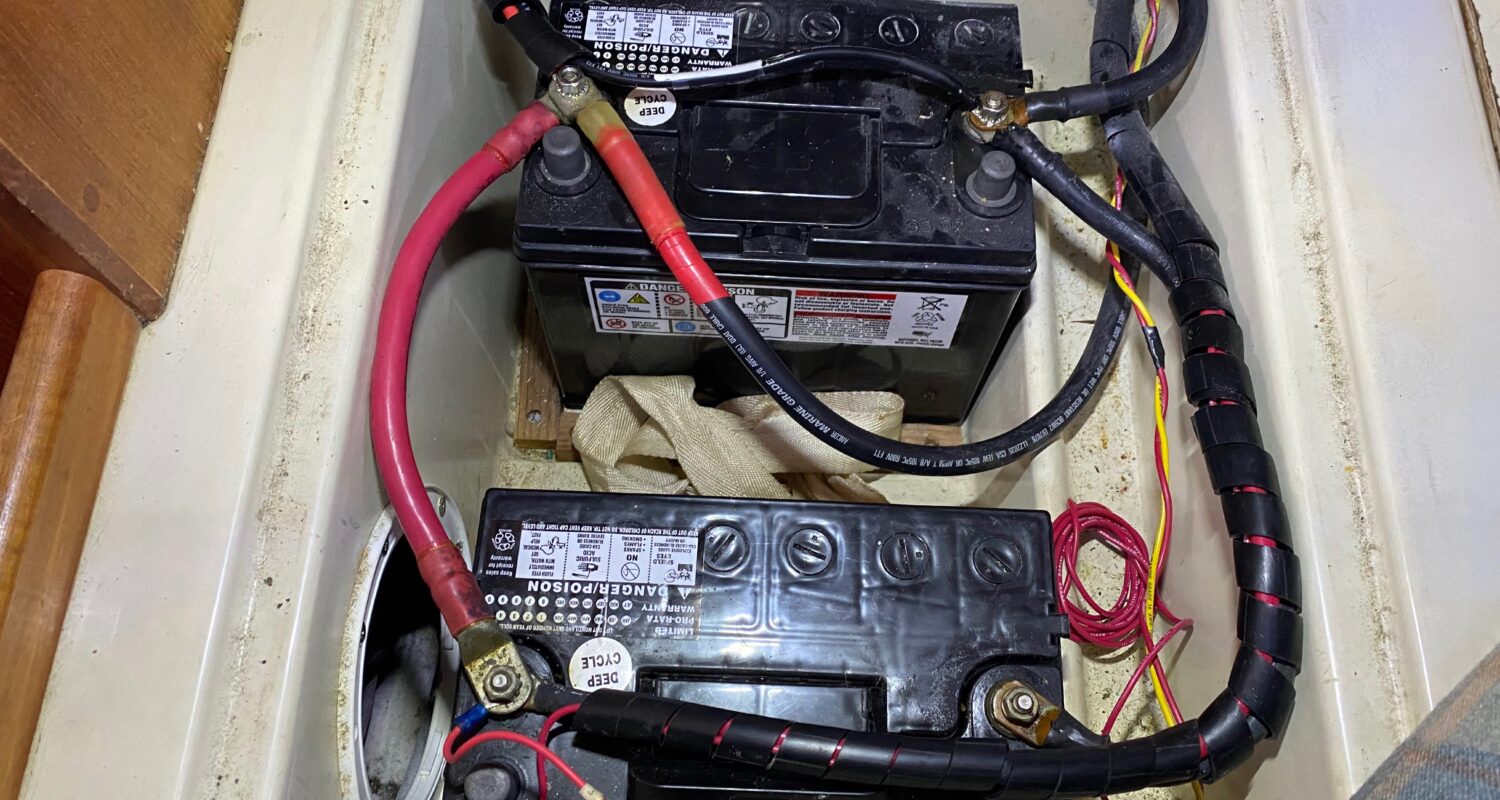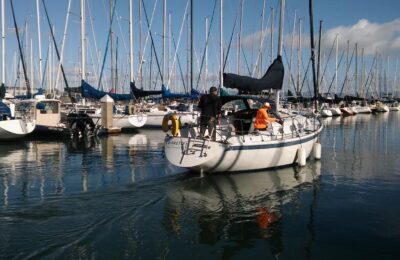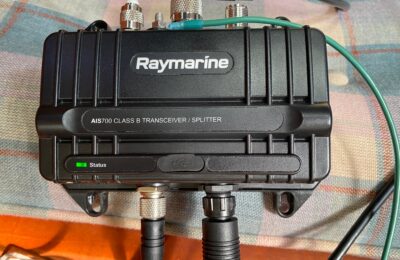Battery System Requirements
Basics
The battery/power system has to be safe.
The battery/power system should be “set-it and forget-it” as much as possible.
The system should have redundancy built in for when things go wrong.
Use Case
A place to start with my battery system design is the power budget. A power budget is simply how much electricity I expect to use during different scenarios. For most sailboat owners who day sail and go to different destinations where shore-charging is available this isn’t a big deal. My “use case” is a long passage for 3-4 weeks.
Starting vs. House Loads
The battery system on my boat has to do two fairly different jobs. One is to start the engine. This requires a very short burst of intense power. My Yanmar engine specification requires 460 cranking amps. The second job is very different, which is to provide low amperage draw for very long periods, primarily running lights and electronics with a total draw of less than 5 amps. A perfectly acceptable option is to use the same battery for both jobs. A deep cycle AGM lead acid battery can both start and engine and do a good job of running small electronics.
At this point though, suppose I am a general manager of a football team with a blank roster. I need one guy to kick field goals a couple of times per game, and I need another person to be the center, snap the ball and then block for about half of the game. I could hire one good athlete to do both jobs. He might be as good as 75% of the kickers, and as good as 65% of the centers, but at the end of the game he will be tired and won’t be able to kick very straight or block well if he is worried about his kicking foot.
You get my point, I am sure. If possible I want to separate the jobs of the kicker (starter battery) from the center (house load battery).
House Load Power Budget
The standard power budget format defines how much electricity a boat needs given a circumstance (being at anchor, being underway, in a home berth). The amount of consumption is a starting point for determining the size of battery banks which also informs what sort of charging supply is necessary.
This is my current estimate:
| Device | Watts Used | Amps at 12V | Hrs/Day | Total aH | Notes |
| Raymarine AIS 700 | 5 | 0.42 | 24 | 10 | Internet notes “Less than 3 watts” yet billed as 5 watt broadcast. Turning off broadcast mode would presumably save power though at a risk. |
| VHF Radio Receiving | 9.6 | 0.80 | 2 | 1.6 | Press High vs. Low transmit power to switch between 25Watt and 1 Watt |
| Axiom MFD | 9 | 0.75 | 2 | 1.5 | Reduce Brightness and/or use to lower power consumption. |
| LED Navigation lights | 1 | 0.08 | 12 | 1 | |
| Anchor Light | 0.5 | 0.04 | 12 | 0.5 | |
| Cabin Lights | 0.80 | 2 | 1.6 | ||
| Electric Bilge Pump | 96 | 8.00 | 0.1 | 0.8 | |
| 5V USB access. for 3 hrs | 10 | 1.00 | 3 | 3 | |
| Raymarine Wheel Pilot | 0 | Primary use is when motoring, less relevant for battery-draw down calc. | |||
| Other NMEA 2K Network | 3 | 0.25 | 24 | 6 | |
| Total | 26 | ||||
| Error / Bonus | 10 | ||||
| Total | 36 |
I think, with a substantial margin for error, my use will not exceed 36 amp hours.
A Holistic Design / Small Is The New Big
It’s easy when one starts investigating alternators and batteries and solar panels to gain excitement for a bigger-is-better approach. “If I buy that 200aH battery, I can microwave hot dogs whenever I want!” “If I put that 200amp bus alternator in, I can power my boat and run my electric shaver!” “If I install 500 Watts of solar panels, I can play Nintendo all the way to Tahiti!”
Here are what I think are some drawbacks to upsizing various components:
A big battery bank
- Adequately charging a large battery bank can be problematic for a small sailboat. Will you chronically undercharge your batteries, or will you upsize your alternator, or have an enormous solar array (that only really works when the sun is shining?)
- A big battery bank wants to be charged with more amps. If you are charging with 100 amps or 150 amps you will need big wires (difficult to install) and big fuses (where to place?)
An enormous alternator
- Alternators place a load on the engine turning the shaft. Per the internet (!) the rule of thumb is 1hp per 25 amps. So if my 24hp Yanmar is trying to run a 150 amp alternator, it will be down to a 19hp Yanmar. More fuel gets used up pushing amps.
- If your alternator is pushing out 80+ amps, you need heavy gauge wire and adequate fuses to manage that power flow.
- If you are using lead acid batteries, once your batteries are mostly full, they will stop accepting the larger current anyway so you still be pushing in way less than the rated amperage from your big alternator.
- Belt friction from a large alternator can also be an issue. Various kits for serpentine belts and other arrangements are sold, but belt dusting etc. seem to be a limit point for these upgrades.
A huge solar panel array
- It’s possible to construct a large panel array on your boat, but where will you put it? Most live-aboard cruisers seem to choose mounting important panels above the transom. That seems okay if one is going to be at anchor for an extended period in an exotic location, but I would prefer to avoid the windage and hassle of such an arrangement.
Given that my electrical needs are somewhat limited and after thinking through a lot of these issues, the question I think I want to answer is not to determine the biggest and most extensive power system I can build. Instead, I think the issue is to determine the system that will meet my needs, be easy to manage and install, and will be consistent with my 32 foot sailboat and 24hp engine.
Battery Selection
Physical Location / Size / Form Factor
My boat has two existing battery locations, a forward bank that was built after-the-fact and a rear bank location that was the factory-intended site for batteries. I don’t think I need the forward battery bank location. I think I can complete my system design utilizing only the aft bank space and keeping everything at the stern end of the boat will save me a great deal of hassle running wires and allow me to reclaim the V-berth storage presently used for batteries.
The aft battery bank space looks like this, and is roughly 17.375” long, 10’5” wide and about 9” tall (below the wooden lid that covers the recessed space.
The most common form-factor I found when researching different battery types is called Group 27. Battery groups are nominal sizes of the actual plastic box that holds the chemicals and metal. The batteries I have are Group 24. While the height and width of Group 27’s and 24’s are relatively close, the key difference is the length: Group 27’s are about 12 inches long and Group 24’s are about 10 inches long. My battery compartment could not accommodate two Group 27’s due to the length. One Group 27 could be installed sideways.
Battery Chemistry
Most people with 30 year old sailboats like mine have some form of lead-acid battery. Flooded, Sealed, AGM, or Gel. The alternative is to use Lithium Batteries and that is what I plan to do.
Lithium Advantages
Lithium battery benefits include being much lighter, being able to be discharged safely much deeper than lead acid batteries of the same physical and storage size and in most cases smaller. Lithium batteries are also less expensive on a lifespan basis. As with most of this system specification if I was only day sailing and doing weekend trips, choosing lithium over lead acid might be excessive or unnecessary.
Lithium Disadvantages
- Potential to overheat alternators: Alternators typically monitor voltage and moderate their operation by adjusting the voltage being produced. Batteries accept current (amps) at varying rates and Lithium batteries, unlike lead acid batteries, can accept a lot of current quickly. This large-current acceptance has the potential to overheat an alternator. This is particularly problematic at low alternator RPM’s when the alternator’s fan cannot cool the device. Here is a video from Victron, an electronics manufacturer, illustrating this problem:
- Potential to damage alternators by BMS disconnect. All lithium batteries require some sort of battery management system (BMS) which is a circuit board that monitors the state of the cells that compose the battery itself. While a few batteries with external BMS systems are sold, most consumer oriented batteries have an integrated BMS which is integrated into the body of the battery. The role of the BMS is to keep the battery and the user safe. Some of the monitored parameters prevent over-loading, over-charging, over-discharging, overheating, over-current loading and short circuit.
If the BMS senses one of these conditions, it can shut the battery off instantly. The problem with this scenario is that if a battery is pulling a lot of current from an alternator and then suddenly stops, the current has nowhere to go and this can damage the diodes within the alternator. It’s beyond the scope of my research to illuminate the nature of the diode damage, beyond that lithium batteries can do this sort of damage.



